A BAKER’S DOZEN OF ESSENTIAL GARDENING TOOLS
With 40+ years of gardening under my belt, many gardening tools have come and gone around here. Or not gone; they may still be sitting in a dark corner of my garage. Some of those tools, while hardly essential, I’ve consciously kept because they are useful every once in a while, perhaps every few years. A pickaxe, for example. If I didn’t happen to own one, I could borrow one when needed.
Then there are those tools that get constant use, tools that it would be very hard to do without on an almost daily basis. What follows is my baker’s dozen of essential tools. True, each gardener might tweak such a list to suit his or her specific situation or need, but give each of these tools consideration. You might decide to add or subtract from your own list.
From the Ground Up
Good gardens begin at ground level. I pay close attention to my soil and a few of this Baker’s Dozen list relate to the soil.
It’s been 35 years since I purchased a garden cart, essentially a sturdy, 3-sided wooden box that rolls on 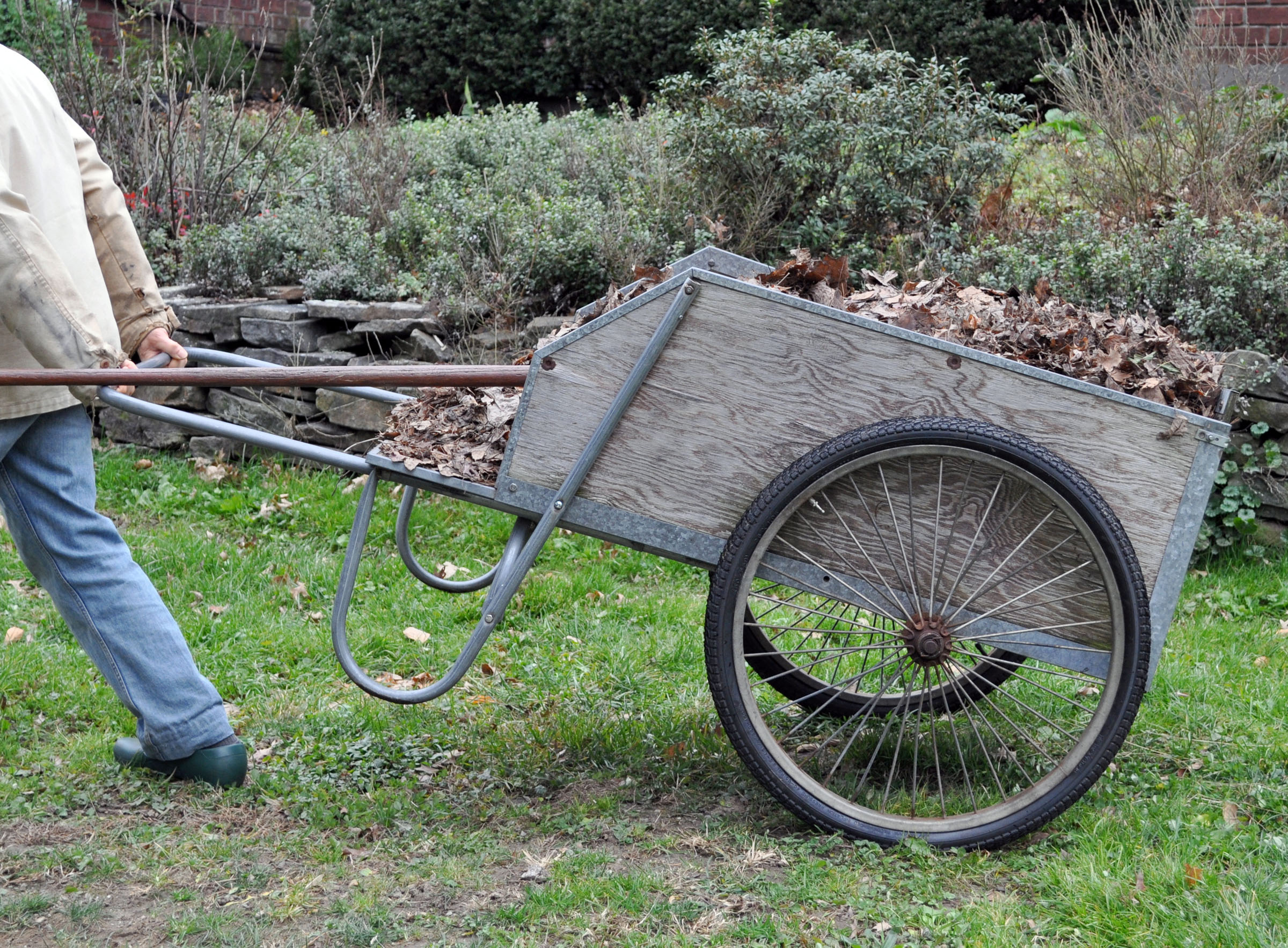 2 also sturdy wheels mounted sufficiently starboard so that my energy is expended in pulling rather than lifting and pulling.Most of the essence of good gardening could be summed up in two words: organic matter. These living or once-living materials — straw, compost, leaves, and the like — are bulky, and my garden cart’s capacity of about 400 pounds or 14 cubic feet is up to the task. I now own three carts.
2 also sturdy wheels mounted sufficiently starboard so that my energy is expended in pulling rather than lifting and pulling.Most of the essence of good gardening could be summed up in two words: organic matter. These living or once-living materials — straw, compost, leaves, and the like — are bulky, and my garden cart’s capacity of about 400 pounds or 14 cubic feet is up to the task. I now own three carts.
A pitchfork is a necessary adjunct to a garden cart. I happen to have accumulated 4 pitchforks (4, 5, 6, and 10 tine models) over the years. The 10-tine fork is useful for spreading fine wood chips, the 4-tine one for moving a pile of spent tomato vines onto the compost pile. Still, one fork would probably suffice, and for that one I’d choose a 5- or 6-tine fork. (Note the difference between a pitchfork, with skinny, round tines and a straight handle, and a garden fork, with flat tines and a D-handle.)
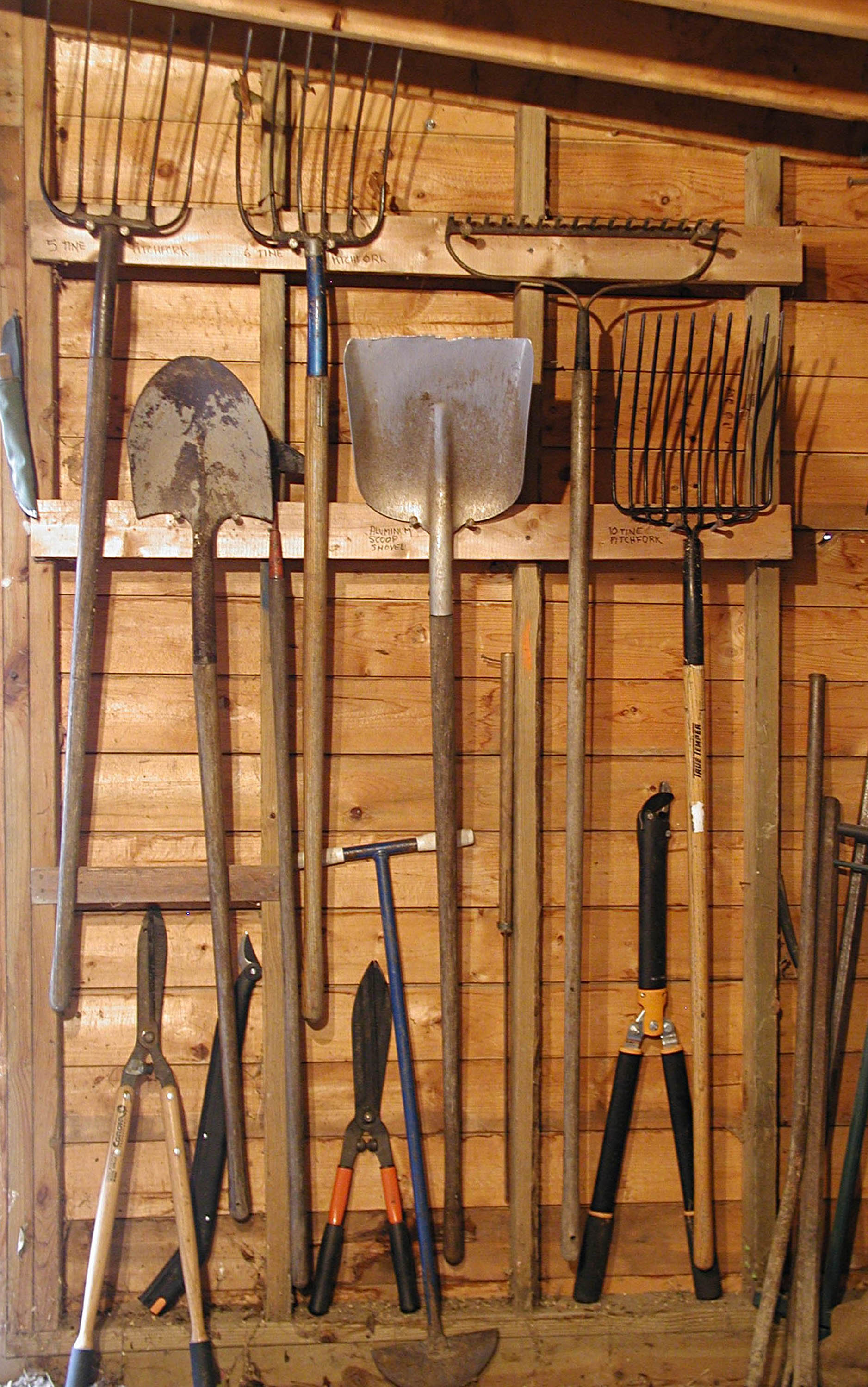
My stable of pitchforks & other tools
Pile up organic materials and they will eventually rot, becoming compost. A compost thermometer makes for more interesting and better composting. Even after 40+ years of composting, I am amazed whenever, after sliding the 2-foot-long probe into the innards of the pile, I see the needle on the dial climb to 140°F., or higher. 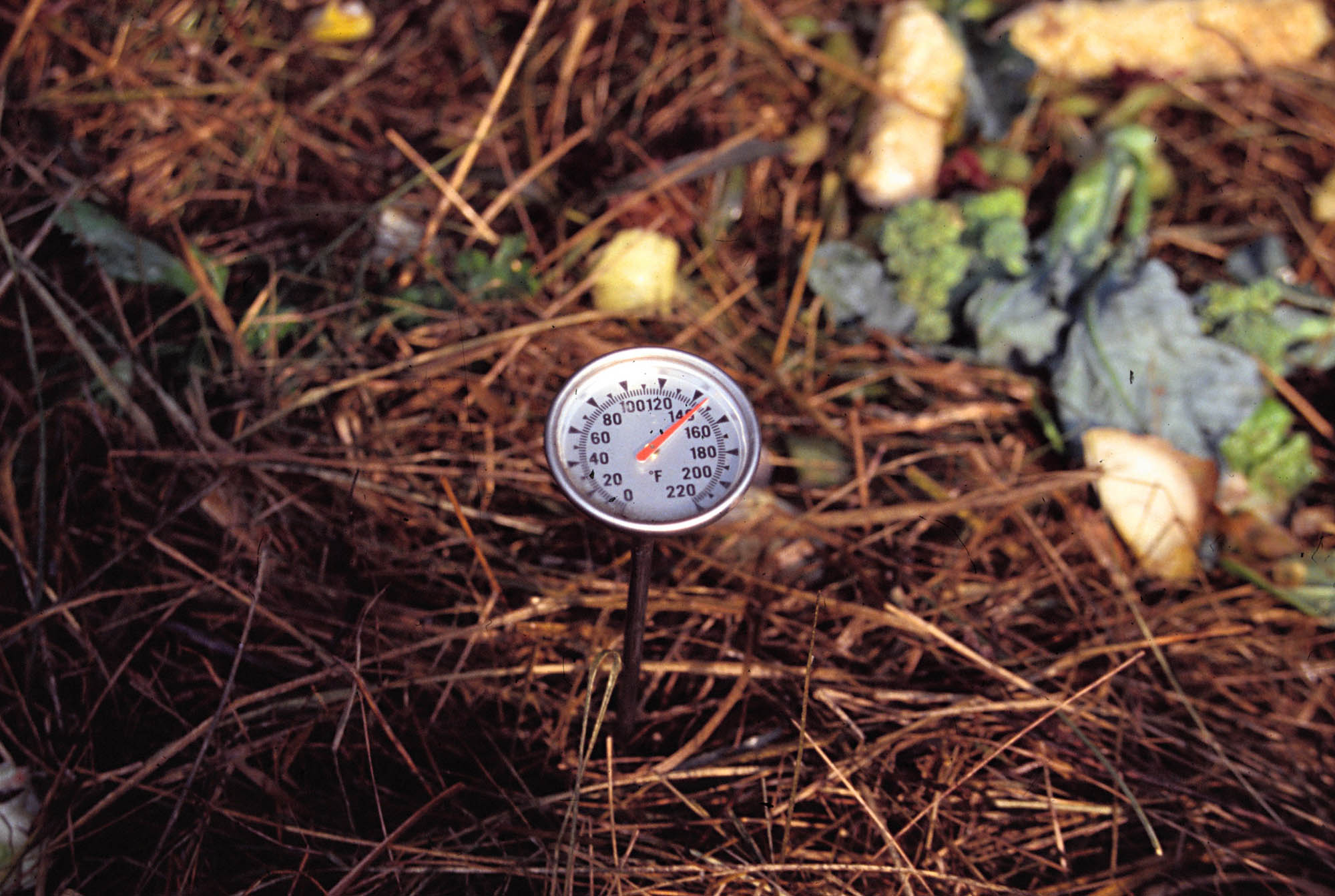 That temperature lets me know that everything’s cooking along well, and that most weed seeds, pests, and pathogens will be snuffed out quickly. (Most will be snuffed out even without all that heat, but I’ll make sure to let a less hot compost pile “cook” longer to get much the same effect.)
That temperature lets me know that everything’s cooking along well, and that most weed seeds, pests, and pathogens will be snuffed out quickly. (Most will be snuffed out even without all that heat, but I’ll make sure to let a less hot compost pile “cook” longer to get much the same effect.)
All this compost and organic matter is for naught if a soil is too dry or wet. Here I offer two tools for monitoring moisture. One is a rain gauge to tell how much rain has fallen. As a rule of thumb, one inch depth of water once a week is sufficient moisture. My favorite is the “Taylor Capacity Break and Freeze Proof Flexible Silicone Rain Gauge,” easily read as I look across the deck to it.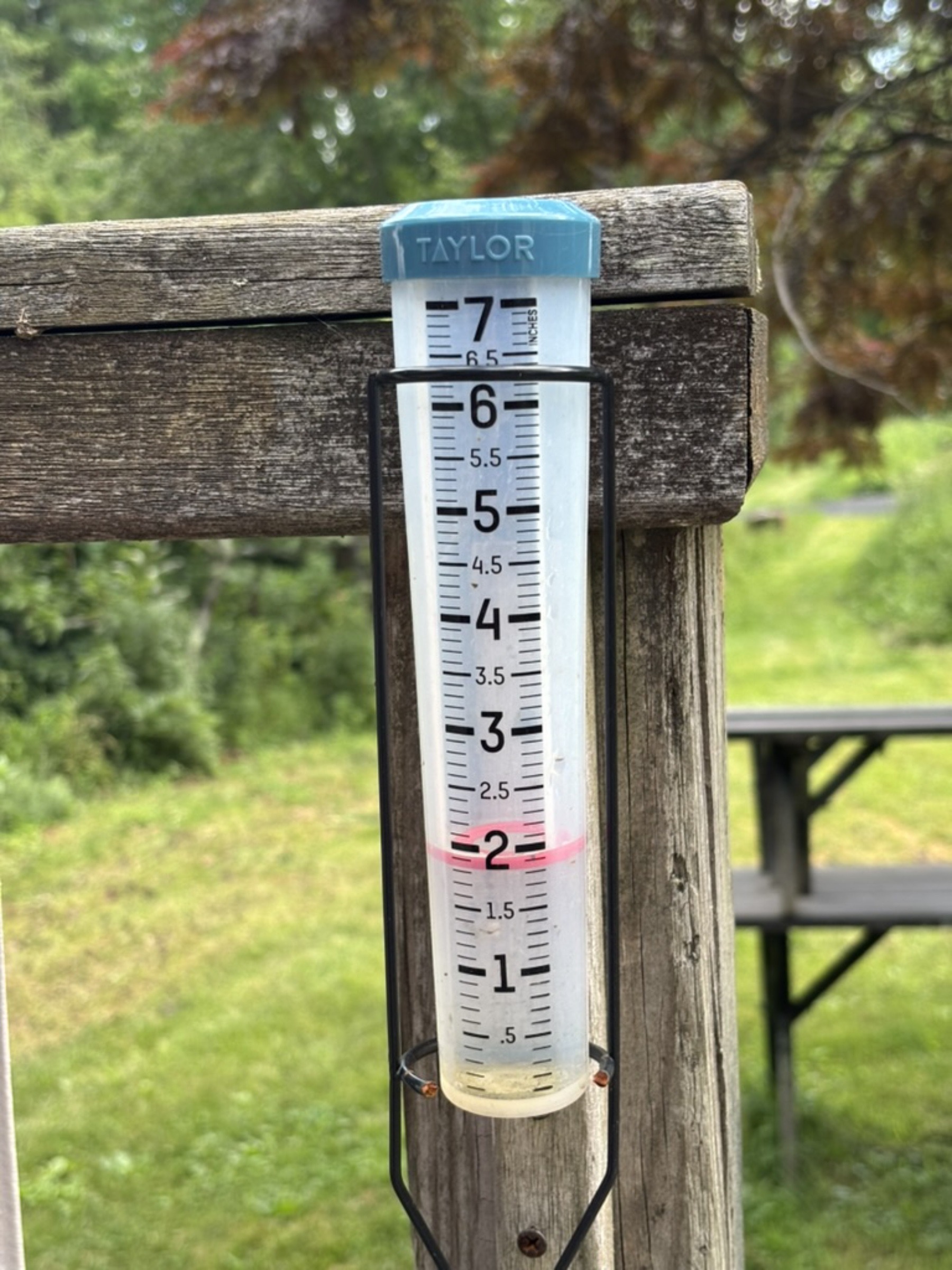 A moisture probe is the other option in moisture monitoring, this gadget tells you if your soil is wet, moist, or dry. Just slide the metal probe into the soil at various places and it will gauge moisture from surface level to about 6-12” deep, the zone where most roots reside. Having both a moisture probe and a rain gauge is even better.
A moisture probe is the other option in moisture monitoring, this gadget tells you if your soil is wet, moist, or dry. Just slide the metal probe into the soil at various places and it will gauge moisture from surface level to about 6-12” deep, the zone where most roots reside. Having both a moisture probe and a rain gauge is even better.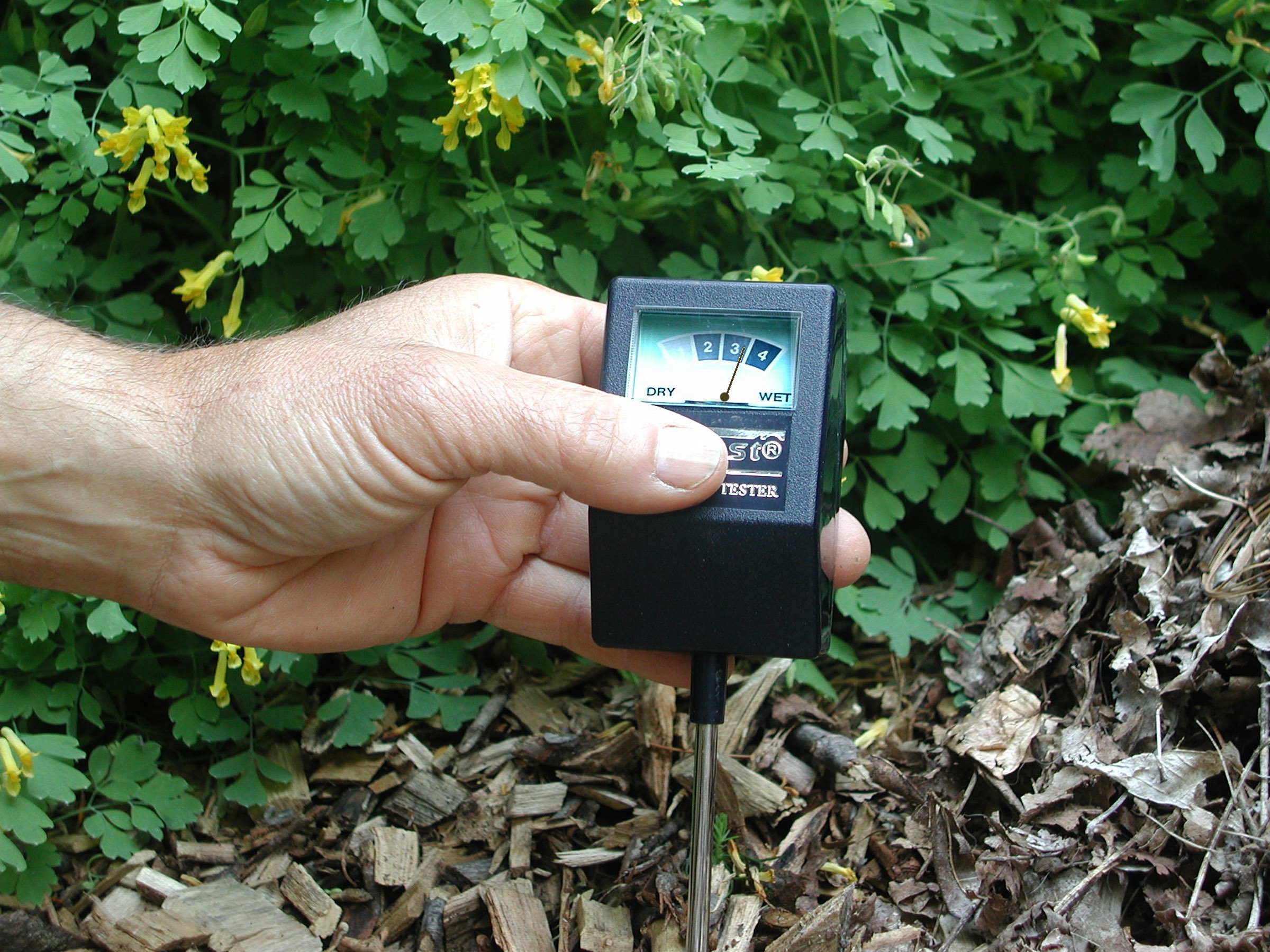
Good soil grows weeds as well as garden plants, and that calls for a hoe. More on hoes and hoeing in future posts. My favorites are the winged weeder and the wire weeder.
Plant Growth
With soil taken care of, it’s time to plant.
I raise pretty much all my vegetable and flower seedlings. Watering all those flats of seedlings was quite a chore until I invested in and also made some capillary watering setups. Basically, I have a number of multicellular trays, each of which can accommodate many seedlings. Each cell has a wide drainage hole and sits on a capillary mat, the end of which folds down into a water reservoir. Seedlings are watered automatically via water wicked up from the reservoir into the mat and then up drainage holes. My only task is to remember to periodically top up the reservoir.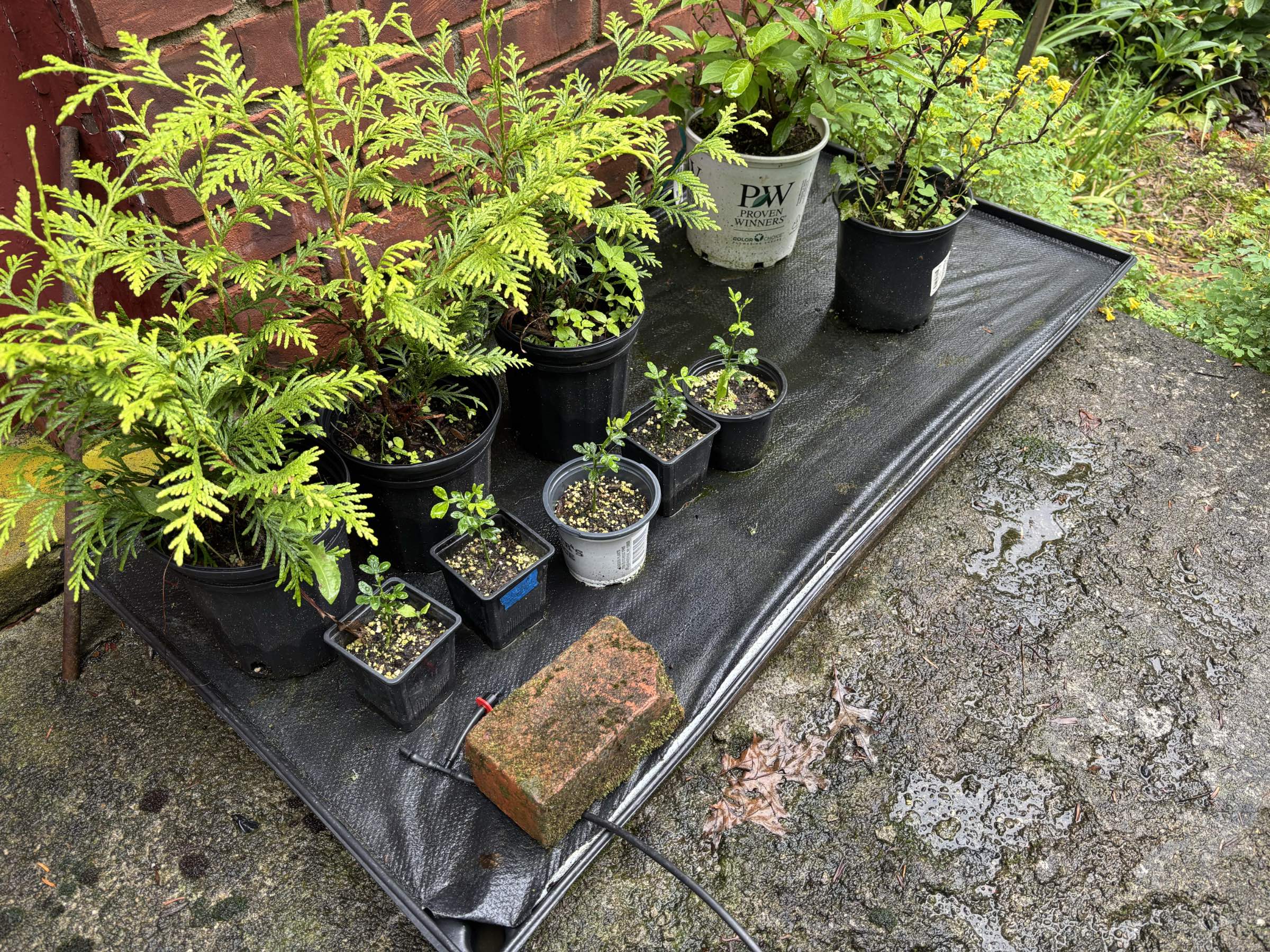
When planting time comes, a trowel is needed. I favor the Hori Hori Knife, something like a hybrid of a trowel and a knife, with a blade wide enough for planting and digging up recalcitrant weeds and sharp enough on its sides, one of which is serrated, to cut roots when pulling plants for cleanup.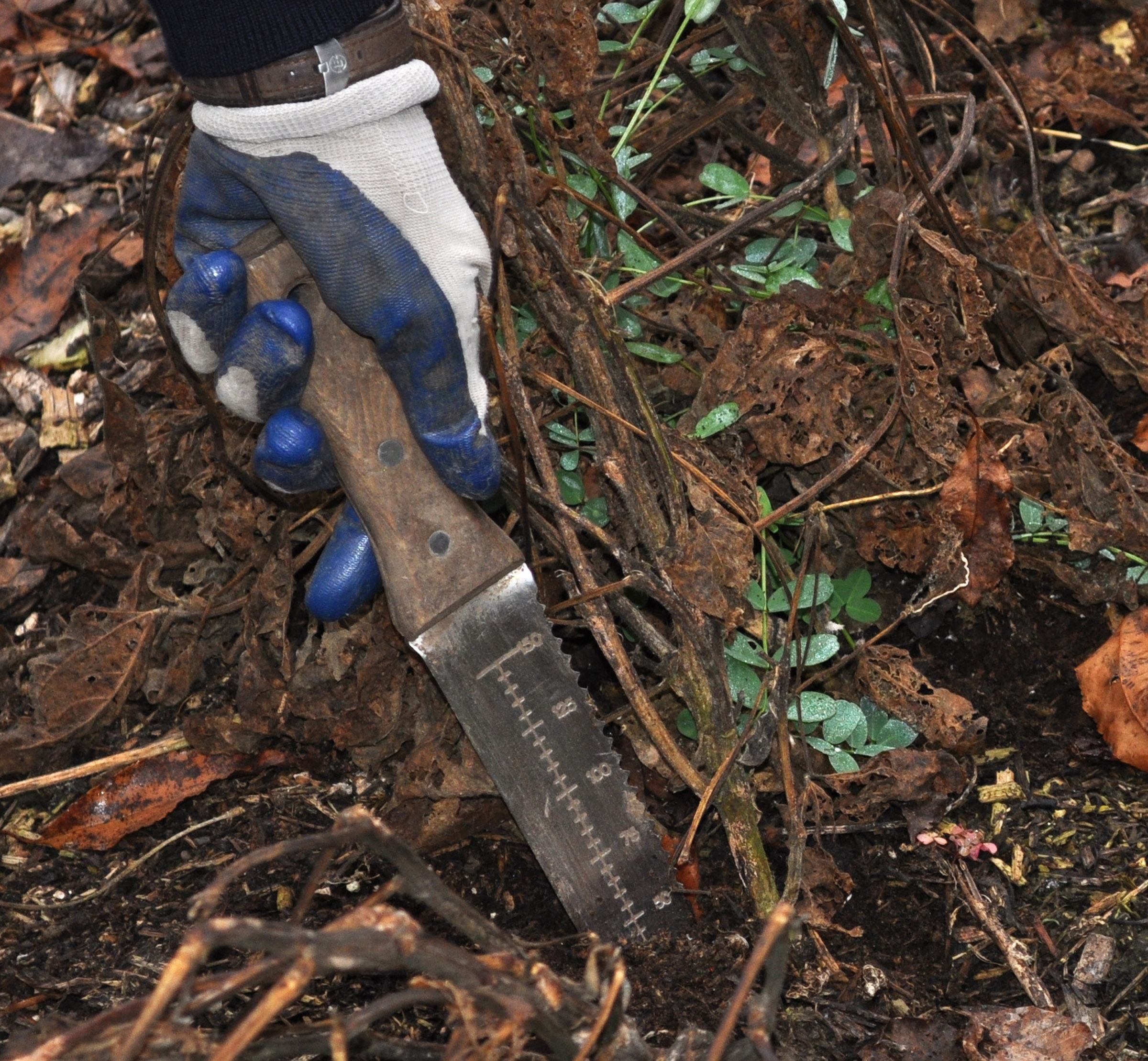
For larger plants, a bona fide shovel is needed. Over the years, I’ve dug up and replanted many trees and shrubs; my all-around most useful shovel is a tile spade, with a long, narrow blade that cuts deep into the soil and a short handle with a D-grip for power. A tile spade is also useful for dividing perennials.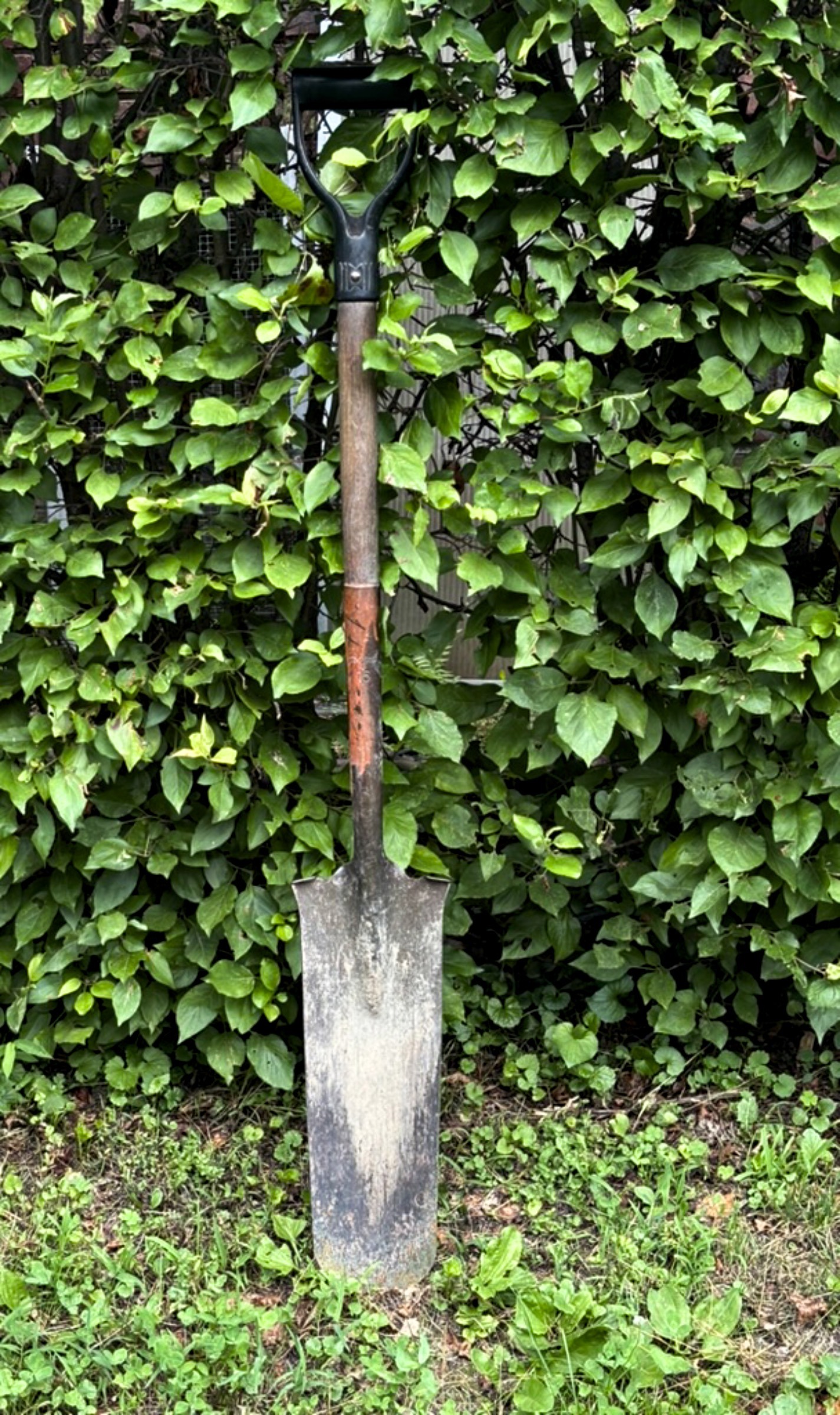
Those growing plants need care, perhaps pruning. A pair of pruning shears is the one tool you will need if you own but one pruning tool. Because a pair of hand shears is such a useful tool — one that I often drop into my back pocket before I walk out into the garden — check out the style, weight, hand fit, and balance of several models before you settle on one. Best are bypass pruners, whose blades scissor past each other; my favorites are ARS, Pica, and Felco.
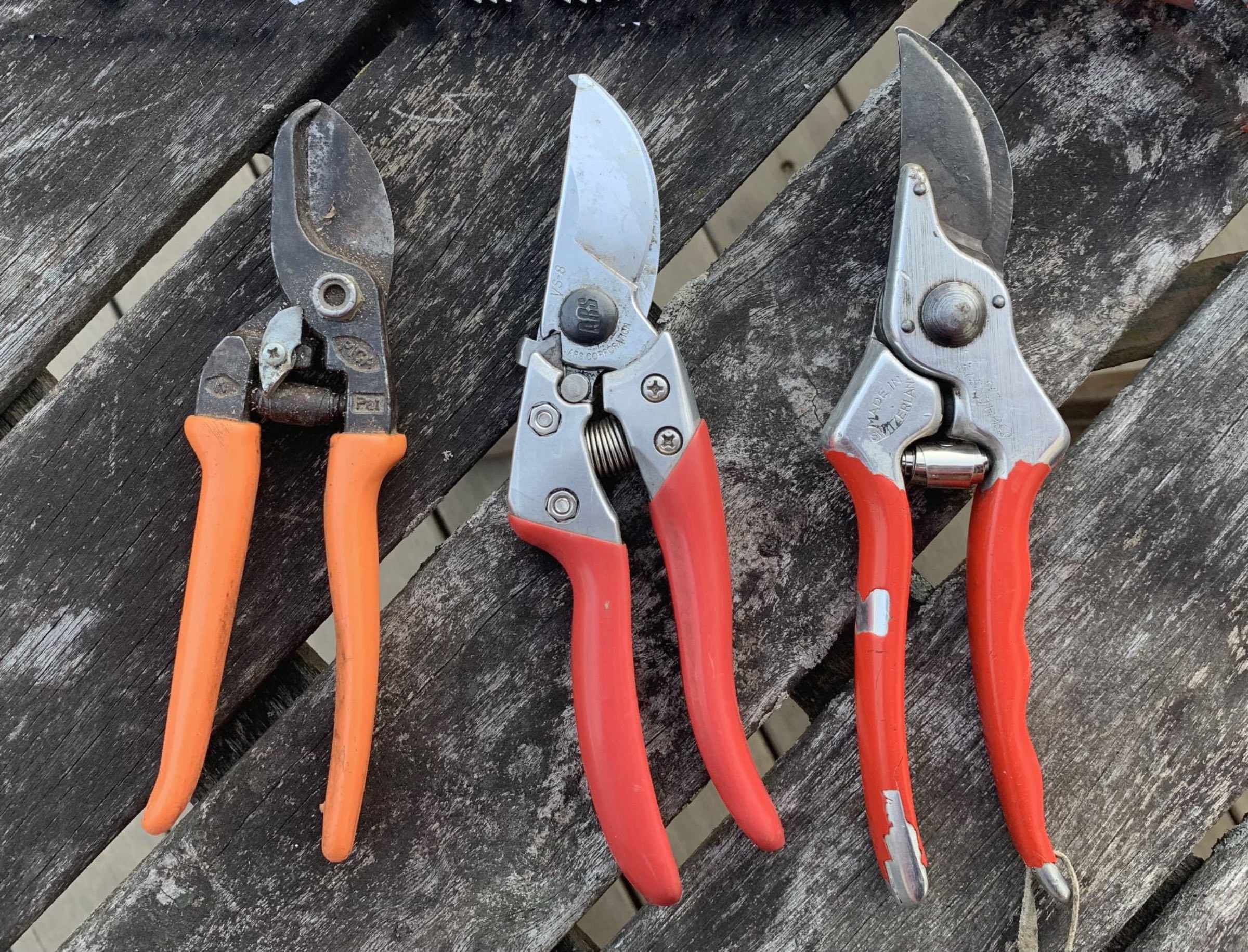
Hand shears, Pica, ARS, Felco
For pruning branches more that about 1/2” in diameter, I graduate to a lopper. In my opinion, the best are those made by Fiskars (not so for their pruning shears).
For You and Me
Essential gardening tools aren’t only about plants and soil; they’re also about you and me. I wear a lot of hats (not all at once) in the garden, and have yet to find the perfect one.
Last, but far from least, in this baker’s dozen of essential garden tools, is a good pair of gloves. Gloves are needed when pulling or pruning, or pulling and pruning, prickly or thorny plants. Some of us — myself included — like to wear gloves even for more delicate work like detailed weeding or setting out transplants. (I believe the joys of getting your hands in the dirt is overrated.) Here, literally, “one glove does not fit all.” But two gloves might: a pair of leather gloves for heavy or thorny or prickly work; a pair of Cooljob gloves for just about everything else.
But why stop this list at a that Baker’s Dozen? Three more essential tools that come to mind are a good watering can (the “French Blue Watering Can is my preference) and a machete (for chopping compost ingredients). 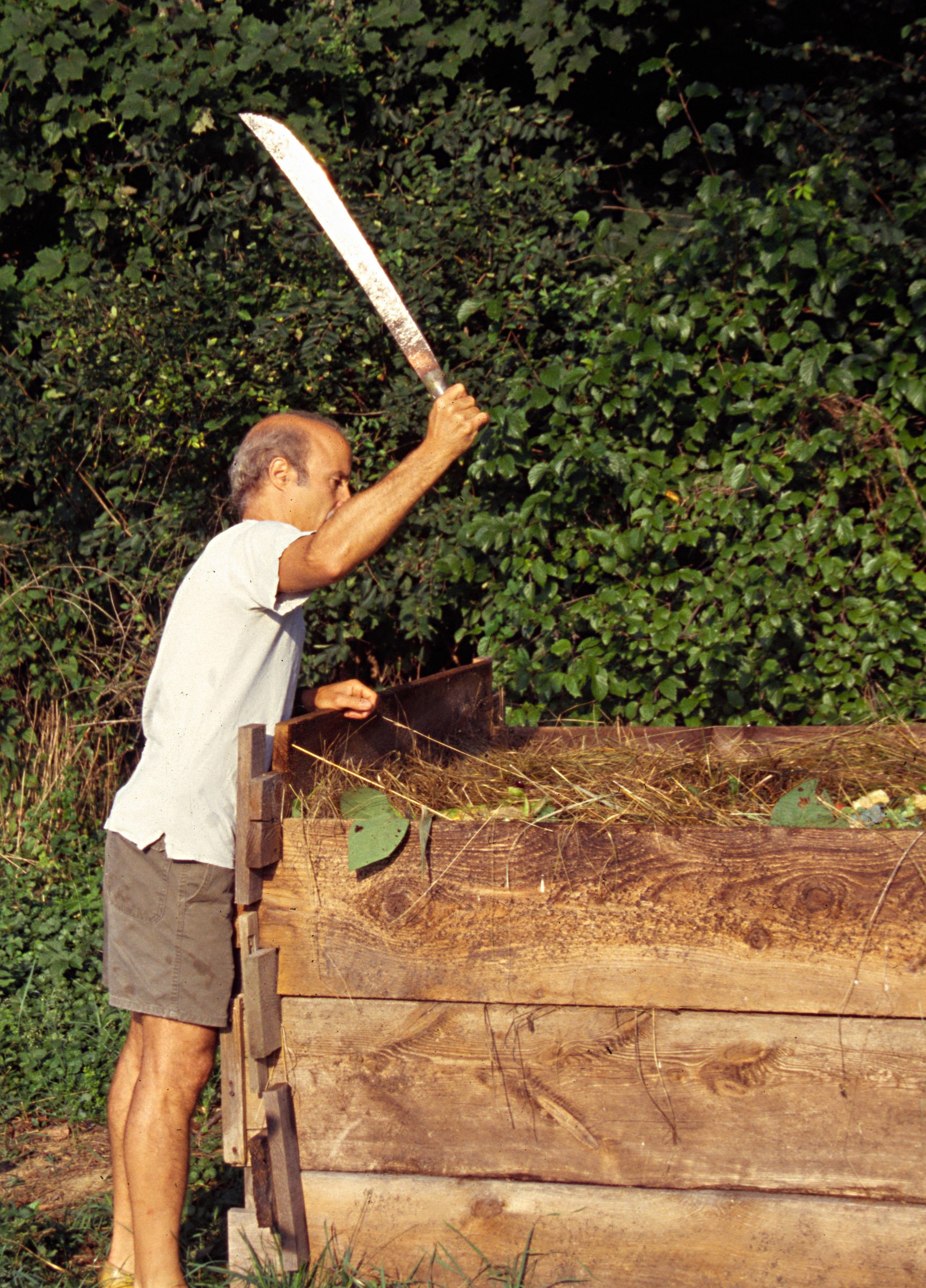 And, of course, stretching the idea of “tool,” some good gardening books. For tools, I recommend W. B. Logan’s Smith & Hawken: The Tool Book: A Compendium of Over 500 Tools for the Well-Tended Garden, Eliot Coleman’s The Winter Harvest Handbook, and, of course, my book, The Pruning Book.
And, of course, stretching the idea of “tool,” some good gardening books. For tools, I recommend W. B. Logan’s Smith & Hawken: The Tool Book: A Compendium of Over 500 Tools for the Well-Tended Garden, Eliot Coleman’s The Winter Harvest Handbook, and, of course, my book, The Pruning Book.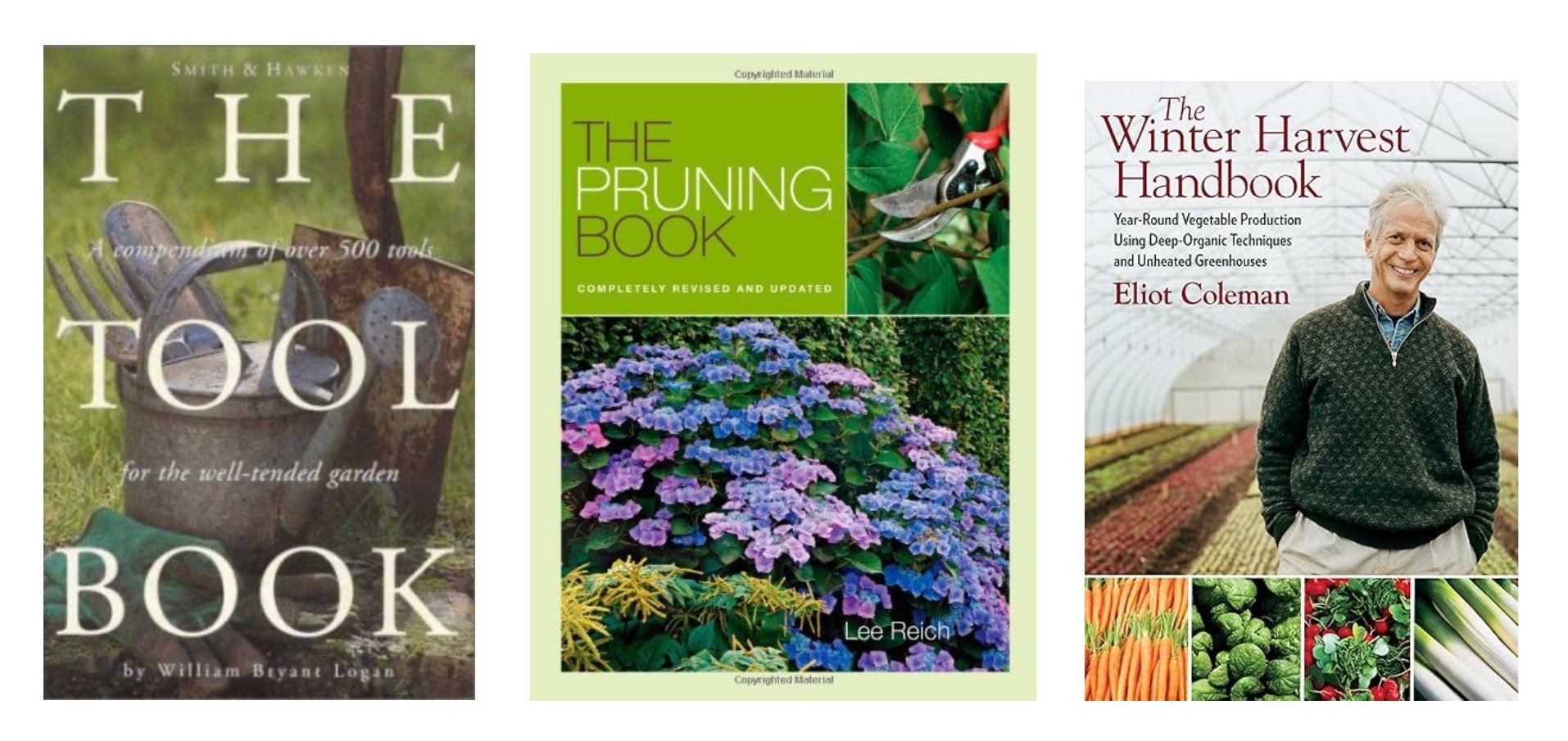


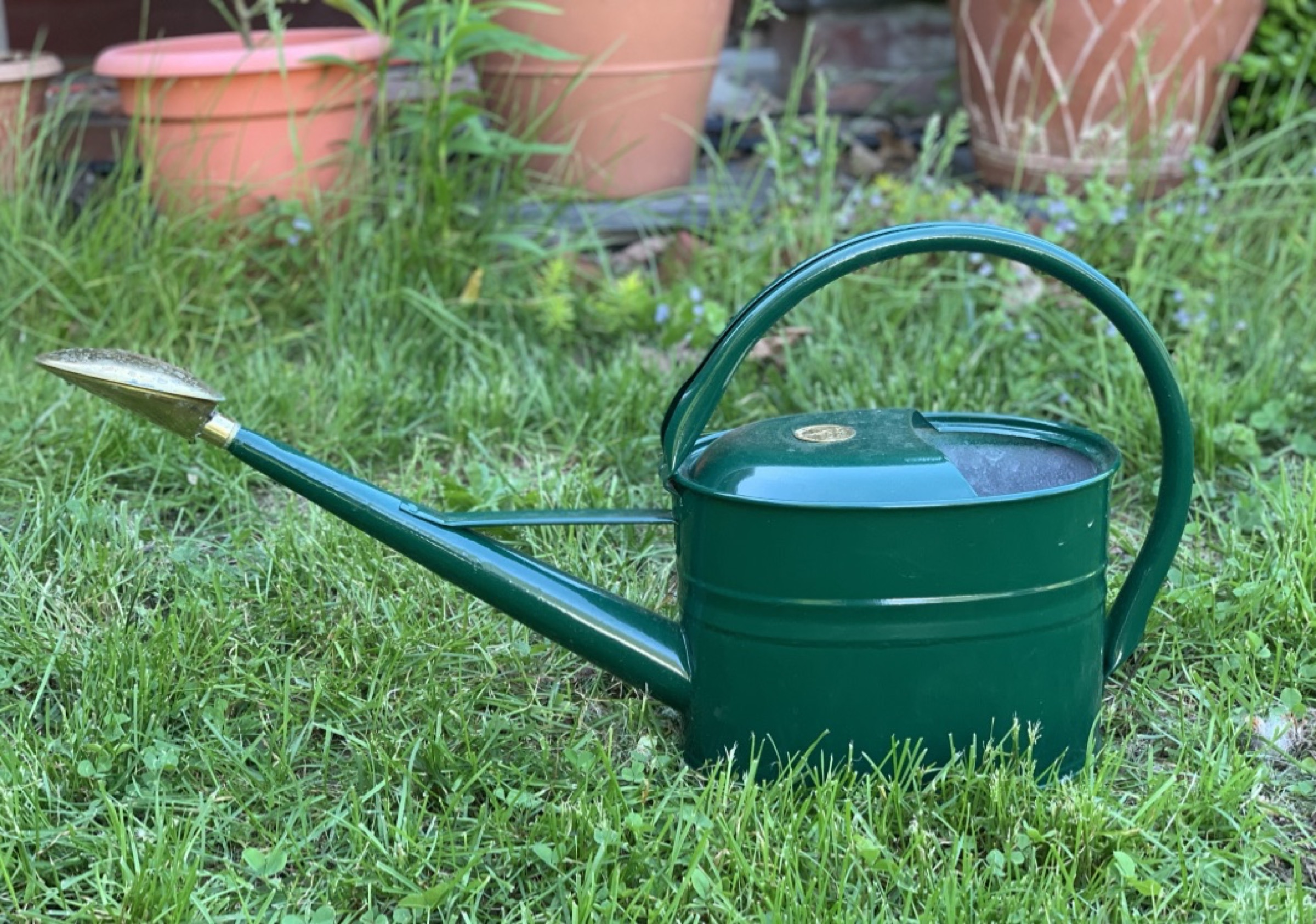
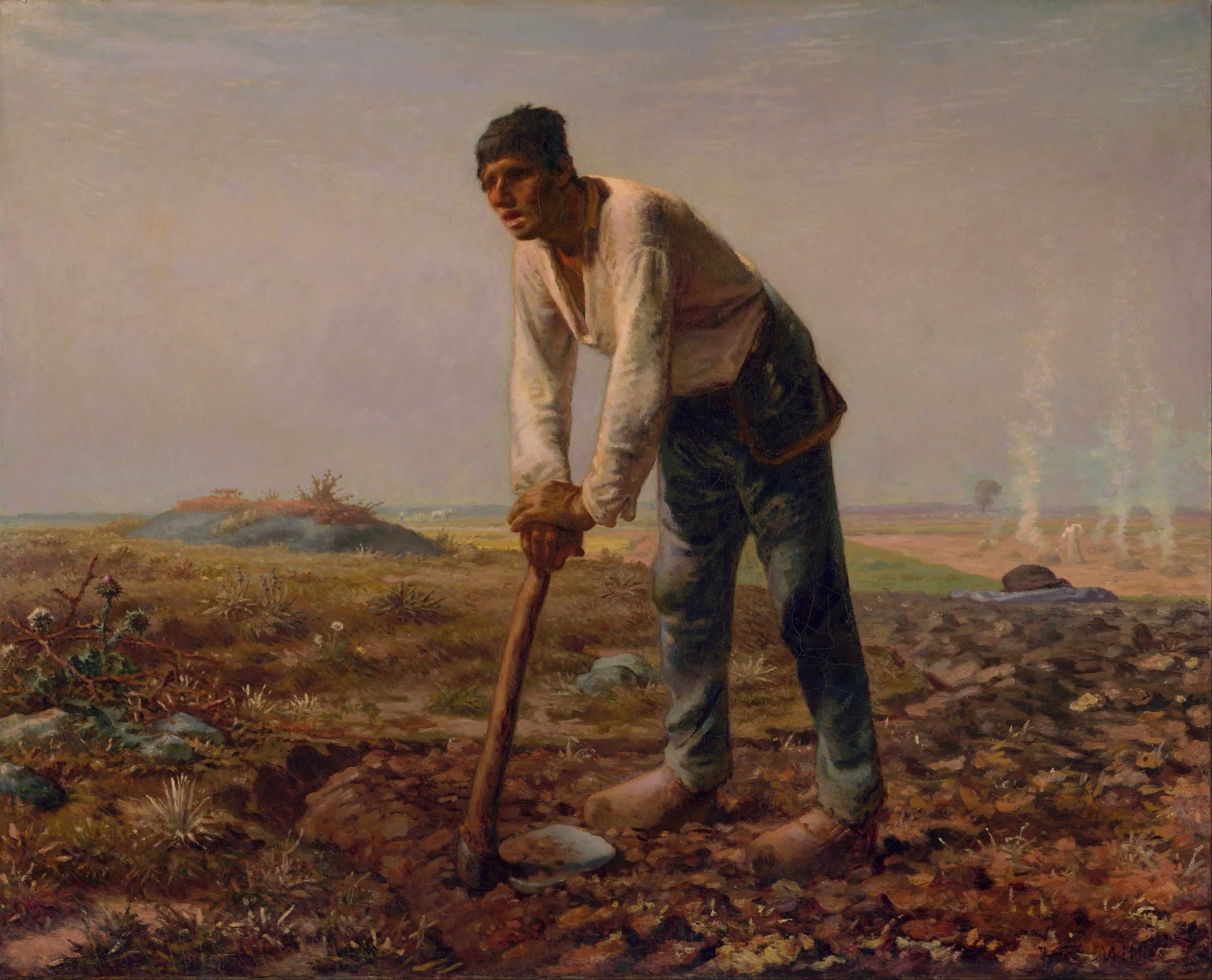
Essential tools make gardening easier and joyful.